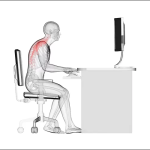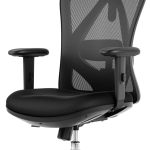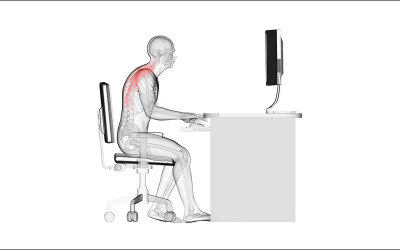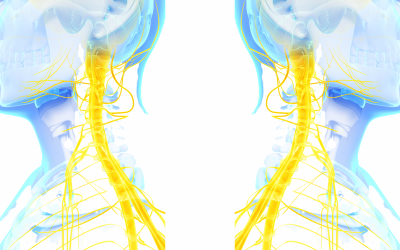Neck surgery is an orthopaedic procedure on and around the cervical spine. The cervical spine, which runs from the skull base to the collarbone, constitutes the neck’s back.
Performing surgery on the cervical spine is more effective for treating diseases of the cervical spine (the disorder that affects the bones in the back of the neck). The approaches could be posterior or anterior exposure.
Since the spinous processes of the vertebrae are simple to feel, and the posterior portions of the spine are more superficial, the posterior approach treats cervical spine issues. Anterior techniques treat problems not related to the spine.
These procedures typically try to fix problems along the cervical spine, either releasing pressure on the nerves or treating spinal abnormalities. You may be able to regain some motor skills, get pain relief, and resume your regular daily activities with the aid of neck surgery.
Four reasons why you may need neck surgery include:
- Pain that makes it difficult to do daily tasks.
- Degenerative disc disease or facet disease can cause excruciating neck pain.
- A developing and unsteady neck malformation.
- Compression of the spinal cord resulting in myelopathy (Clinical presentations or limitations caused by the pressure).
Consider having neck surgery if you fit any of the following descriptions:
- I have had an arm or neck ache for at least two months.
- For more than two months, physical therapy has not reduced my pain.
- I recently suffered a neck or back injury.
- My discomfort comes back to the same spot.
- I have had a spinal disease treatment in the past, but the pain is still there.
- My most recent MRI revealed stenosis, an annular tear, or one or more bulging or herniated discs.
The Different Types Of Neck surgery
There are many types of neck surgery. The kind of surgery you might require will depend on your particular preferences, the underlying cause of your issue, and the doctor’s advice.
What are the most common types of neck surgeries?
Anterior cervical discectomy and fusion (ACDF):
It is for treating cervical spinal cord compression or a pinched nerve. The front of your neck will be where the surgeon makes the surgical incision and removes the pressure-causing disk and any adjacent bone spurs. The next step is to do a spinal fusion to stabilize the region.
Anterior cervical corpectomy and fusion (ACCF);
is for degenerative cervical diseases with anterior spinal cord compression and severe subaxial injuries. It effectively decompresses the spinal cord.
Cervical spinal fusion:
Reestablishing spinal stability and avoiding more neurological impairments.
Laminectomy:
The recommended method for decompressing degenerative diseases in the cervical spine, such as intervertebral disc protrusions, frank disc herniations, and spinal stenosis, has long been laminectomy (or hemilaminectomy).
Laminoplasty:
Cervical laminoplasty is the treatment of choice for cervical compression myelopathy. And satisfactory surgical outcomes have been reported, and the process varies depending on your conditions.
Artificial disk replacement (ADR):
It is for treating a pinched nerve in your neck. Your front neck will be where the surgeon makes the incision and removes the disk pressing on the nerve. And replace them with an artificial implant. The implant could be made entirely of metal or out of metal and plastic.
Posterior cervical laminoforaminotomy.
The back of the neck is where the doctor makes the incision. The surgeon removes a portion of your lamina using a specialized tool. The doctor removes more bone or tissue, adding pressure on the nerve. This surgery does not require spinal fusion.
What to expect during cervical spinal surgery recovery
Your expectation of the treatment affects the outcome and satisfaction. After your surgery, you could stay in the hospital for one or two days. Depending on the surgery you underwent, you may need to stay in the hospital for a specific time. Neck surgeries frequently take a single night.
Your neck will likely feel tense and uncomfortable after surgery. In the weeks following surgery, this ought to become better. You might require pain medication.
For a period, you might need to use a neck brace. You could stay four to six weeks to resume your regular activities. The type of surgery you underwent will determine how long it takes.
Your doctor might suggest you train with a physiotherapist to strengthen your neck and back muscles. However, everyone recovers at a different rate.
Functional recovery happens within a year of surgical treatment, but additional recovery may take up to two years. Your age at the time of surgery significantly affects how quickly you recover from surgery. The length of symptoms before surgery affects how well you recover.
Recovery tips for neck surgery
It is important to note that these are merely general recuperation counsel, and your best course of action is to heed the specific recommendations made by your surgeon. These principles include:
1. Be Aware of Your Posture – Poor neck posture frequently results in the necessity for surgery in the first place, so you cannot simply resume your old posture habits following your procedure. Check yourself every hour to make sure your cervical spine is not stressed. These posture checks are crucial even after the healing process is complete because otherwise, you can soon find yourself back on the operating table.
2. Obey Any Restrictions Given By Your Doctor. If you were warned not to drive for two weeks or to avoid getting the incision site wet for a few days, obey because there are reasons for the restrictions. Do not blindly push through your activity limits in the hopes that no one will find out.
3. Move slowly: Surgery weakens your neck. When it comes to movement and exercise, you must proceed gradually, lest you overburden the area. Speak to your physical therapist if you have any queries or concerns regarding your rehabilitation program or exercise plan.
4. Do your at-home exercises and attend physical therapy – After neck surgery, physical therapy will be the main factor in your rehabilitation, so be sure to go for your appointments and do your prescribed at-home exercises. If you do not finish the PT program, scar tissue and other issues may develop, stopping you from ever achieving the highest level of medical improvement.
5. Wound Care – Lastly, see to it that the surgery site is being properly taken care of as the incision heals. Discuss with the team the best way to change the dressing. An infection can jeopardize the success of your surgery.
When can you return to work after neck surgery?
Doctor limits your ability to resume work or other regular activities after surgery depending on various circumstances. The patient demography, specific comorbid disorders, complexity and length of the surgery, immediate postoperative course, and baseline functional skills are factors the surgeon considers.
After neck surgery, limits and restrictions are critical components of your recovery. 8–12 weeks seems to be the standard recommendation for returning to work, especially in cases of intensive work.
How long after neck surgery until I can drive?
During the rehabilitation phase, it is crucial to speed up your recovery with the help of suitable activities. Increased discomfort, muscular spasm/injury, wound dehiscence, repeated disc herniation, hardware failure, and other problems are possible if your activity level rises too quickly.
Forklift drivers, truck drivers, and other jobs with medium duty displayed more variation in their responses. Doctors recommend six weeks off from work and driving after neck surgery. Most patients said they had no issues driving six weeks after surgery.
Conclusion
Neck surgery is a treatment option for various neck malfunctions. Your neck disorder will determine the type of surgery required. Neck surgeries are effective, and you can return to normal activities some weeks after the surgery.








